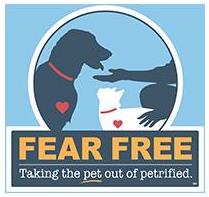Aging or Illness? Signs of Age-Related Disease in Senior Cats

While some signs of aging, such as a graying chin and slowed activity, are easy to identify in your cat, others are more subtle. Most age-related changes in how your cat looks, acts, and feels tend to be gradual. Therefore, it takes a watchful eye to recognize what may be early signs of disease or health problems, and routine checkups become more important than ever.Do you know the signs of pain and illness in your cat? Following is a list of the most common changes associated with age-related diseases and compromising medical conditions. If you note any of these changes in your cat, please let us know. By working together, we can help ensure your pet enjoys the best quality of life possible through out the senior years.
Behavioral Changes
- Decreased activity
- Less interaction with family members
- Sleeping more or sleeping during the day and staying awake at night
- Disorientation/confusion (getting “lost” in the house or yard)
- Less responsive to verbal cues or name
- Excessive meowing or whimpering for no apparent reason
Metabolic Changes
- Weight gain (or loss)
- Changes in appearance (skin, coat, or muscle tone)
- Changes in eating or drinking habits
- Increased urination
- Loss of litter box training
Physical Changes
- Limping/stiffness of gait
- Poor vision or difficulty hearing
- Dental problems (offensive breath)
- Increase in infections
- Digestive problems, such as increased episodes of vomiting or diarrhea
- New lumps or bumps
Changes in your cat’s appearance or behavior can be a sign that something is medically wrong, so don’t assume your pet is just suffering from “old age” and can’t be helped. Keep a close eye on your senior cat, and talk with us about any type of change, whether it occurs suddenly or gradually.









